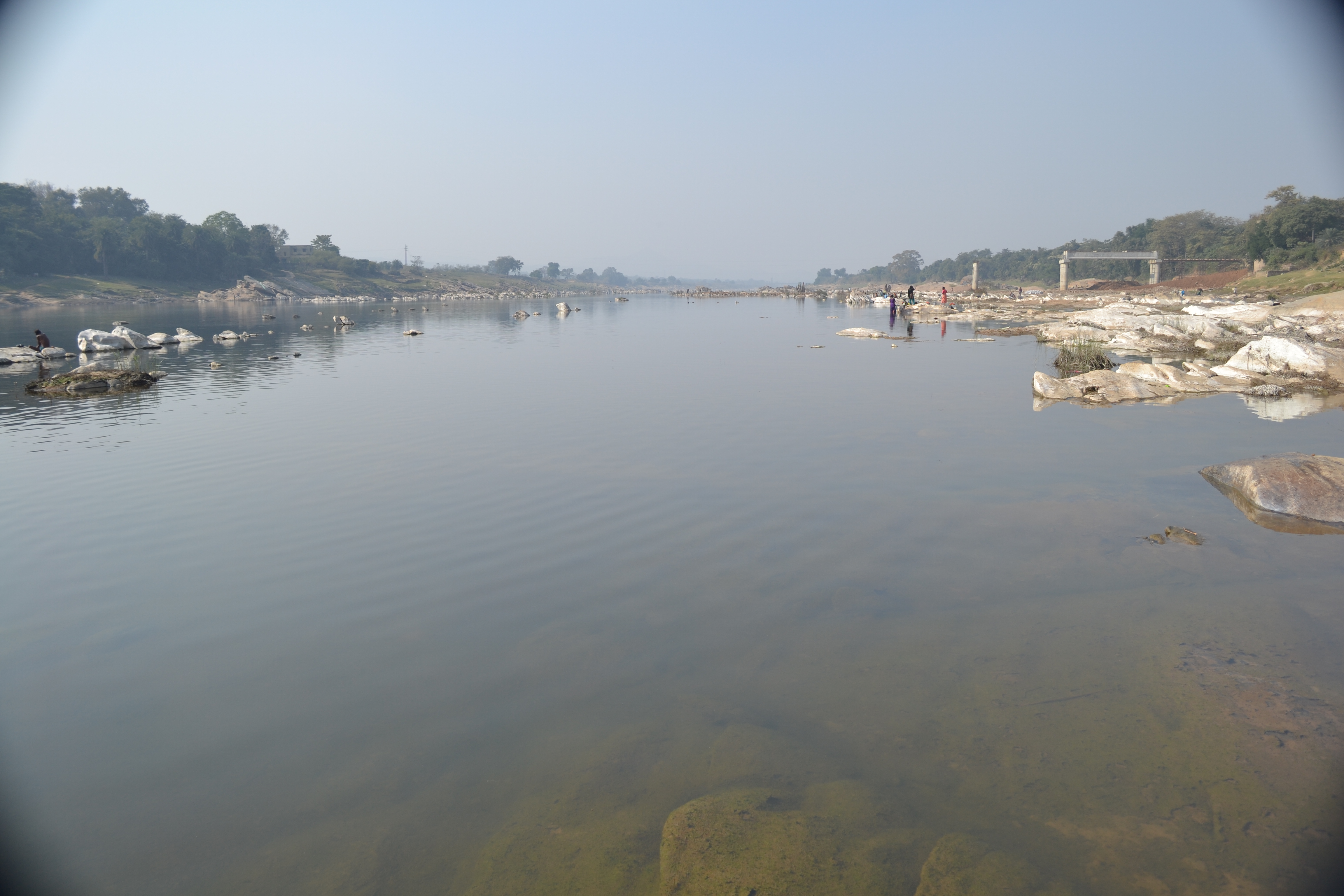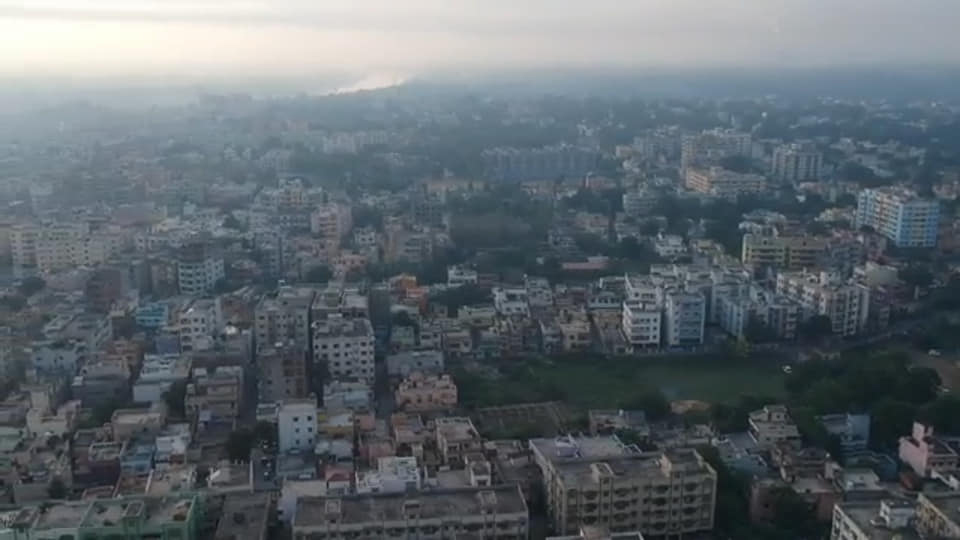|
Potka Block
Potka block is a CD block that forms an administrative division in the Dhalbhum subdivision of East Singhbhum district, in the Indian state of Jharkhand. History The laying of the foundation stone of the steel plant by Tata Steel (then known as Tata Iron and Steel Company) in 1907 at Sakchi Kalimati in Singhbhum district marked the beginning of the industrialisation of the area. The first police station in the area was opened in 1912 at Jugsalai. The Kalimati Sakchi village was renamed ‘Jamshedpur’ in 1917. Dhalbhum subdivision was created in 1920 with Jamshedpur as headquarters. Jamshedpur Notified Area was established in 1924. East Singhbhum district, with Jamshedpur as headquarters, was set up in 1990. Geography Potka is located at . “The district forms a part of the Chota Nagpur Plateau and is a hilly upland tract”. The Seraikela Dhalbhumgarh upland and the Dalma range are natural divisions of the district. The main rivers are the Subarnarekha and the Kha ... [...More Info...] [...Related Items...] OR: [Wikipedia] [Google] [Baidu] |
States And Territories Of India
India is a federal union comprising 28 states and 8 union territories, with a total of 36 entities. The states and union territories are further subdivided into districts and smaller administrative divisions. History Pre-independence The Indian subcontinent has been ruled by many different ethnic groups throughout its history, each instituting their own policies of administrative division in the region. The British Raj mostly retained the administrative structure of the preceding Mughal Empire. India was divided into provinces (also called Presidencies), directly governed by the British, and princely states, which were nominally controlled by a local prince or raja loyal to the British Empire, which held ''de facto'' sovereignty ( suzerainty) over the princely states. 1947–1950 Between 1947 and 1950 the territories of the princely states were politically integrated into the Indian union. Most were merged into existing provinces; others were organised into ... [...More Info...] [...Related Items...] OR: [Wikipedia] [Google] [Baidu] |
Dhalbhum Subdivision
Dhalbhum subdivision is an administrative subdivision of the East Singhbhum district in the Kolhan division in the state of Jharkhand, India. History Dhalbhum subdivision was created in 1920 with Jamshedpur as headquarters. Administrative set up The district consists of two subdivisions - (1) Dhalbhum subdivision with Patamda, Boram, Golmuri-cum-Jugsalai and Potka CD blocks, and (2) Ghatshila subdivision with Ghatshila, Dhalbhumgarh, Musabani, Dumaria, Gurbandha, Chakulia and Baharagora CD blocks. The subdivisions of Purbi Singhbhum district have the following distinctions: Note: Calculated on the basis of block-wise data available. Police stations Police stations in the Dhalbhum subdivision are at: # Bagbera # Birsanagar # Bistupur # Boram # Govindpur # Jugsalai # Kadma # Mango # Patamda # Potka # Parsudih # Sakchi # Azadnagar # Burmamines # Golmuri # Kamalpur # Olidih # Sidhagora # Sitaramdera # Sonari # Sundarnagar # Sspur #Telco Blocks ... [...More Info...] [...Related Items...] OR: [Wikipedia] [Google] [Baidu] |
Dumaria Block
Dumaria block (also spelled Dumriya) is a CD block that forms an administrative division in the Ghatshila subdivision of East Singhbhum district, in the Indian state of Jharkhand. History The laying of the foundation stone of the steel plant by Tata Steel (then known as Tata Iron and Steel Company) in 1907 at Sakchi Kalimati in Singhbhum district marked the beginning of the industrialisation of the area. The first police station in the area was opened in 1912 at Jugsalai. The Kalimati Sakchi village was renamed ‘ Jamshedpur’ in 1917. Dhalbhum subdivision was created in 1920 with Jamshedpur as headquarters. Jamshedpur Notified Area was established in 1924. East Singhbhum district, with Jamshedpur as headquarters, was set up in 1990. Geography Dumaria is located at . “The district forms a part of the Chota Nagpur Plateau and is a hilly upland tract”. The Seraikela Dhalbhumgarh upland and the Dalma range are natural divisions of the district. The main rivers ... [...More Info...] [...Related Items...] OR: [Wikipedia] [Google] [Baidu] |
Musabani Block
Musabani block is a CD block that forms an administrative division in the Ghatshila subdivision of East Singhbhum district, in the Indian state of Jharkhand. History The laying of the foundation stone of the steel plant by Tata Steel (then known as Tata Iron and Steel Company) in 1907 at Sakchi Kalimati in Singhbhum district marked the beginning of the industrialisation of the area. The first police station in the area was opened in 1912 at Jugsalai. The Kalimati Sakchi village was renamed ‘ Jamshedpur’ in 1917. Dhalbhum subdivision was created in 1920 with Jamshedpur as headquarters. Jamshedpur Notified Area was established in 1924. East Singhbhum district, with Jamshedpur as headquarters, was set up in 1990. Geography Musabani is located at . “The district forms a part of the Chota Nagpur Plateau and is a hilly upland tract”. The Seraikela Dhalbhumgarh upland and the Dalma range are natural divisions of the district. The main rivers are the Subarnarekha and ... [...More Info...] [...Related Items...] OR: [Wikipedia] [Google] [Baidu] |
Ghatshila Block
Ghatshila block is a CD block that forms an administrative division in the Ghatshila subdivision of East Singhbhum district, in the Indian state of Jharkhand. History The laying of the foundation stone of the steel plant by Tata Steel (then known as Tata Iron and Steel Company) in 1907 at Sakchi Kalimati in Singhbhum district marked the beginning of the industrialisation of the area. The first police station in the area was opened in 1912 at Jugsalai. The Kalimati Sakchi village was renamed ‘Jamshedpur’ in 1917. Dhalbhum subdivision was created in 1920 with Jamshedpur as headquarters. Jamshedpur Notified Area was established in 1924. East Singhbhum district, with Jamshedpur as headquarters, was set up in 1990. Ghatshila was earlier the headquarters of the Rajas of Dhalbhum. Ghatshila block was established in 1962 with headquarters at Ghatshila. Geography Ghatshila is located at . “The district forms a part of the Chota Nagpur Plateau and is a hilly upland tra ... [...More Info...] [...Related Items...] OR: [Wikipedia] [Google] [Baidu] |
Golmuri-cum-Jugsalai Block
Golmuri-cum-Jugsalai block is a CD block that forms an administrative division in the Dhalbhum subdivision of East Singhbhum district, in the Indian state of Jharkhand. History The laying of the foundation stone of the steel plant by Tata Steel (then known as Tata Iron and Steel Company) in 1907 at Sakchi Kalimati in Singhbhum district marked the beginning of the industrialisation of the area. The first police station in the area was opened in 1912 at Jugsalai. The Kalimati Sakchi village was renamed ‘Jamshedpur’ in 1917. Dhalbhum subdivision was created in 1920 with Jamshedpur as headquarters. Jamshedpur Notified Area was established in 1924. East Singhbhum district, with Jamshedpur as headquarters, was set up in 1990. Geography Bagbera Colony, a constituent census town in the Golmuri-cum-Jugsalai CD block, is located at . “The district forms a part of the Chota Nagpur Plateau and is a hilly upland tract”. The Seraikela Dhalbhumgarh upland and the Dalma range ... [...More Info...] [...Related Items...] OR: [Wikipedia] [Google] [Baidu] |
Kharkai River
The Kharkai River is a river in eastern India. It is one of the major tributaries of the Subarnarekha River. It flows through Adityapur region of Jamshedpur It arises in Mayurbhanj district, Odisha, on the north slopes of Darbarmela Parbat and the western slopes of Tungru Pahar,Jamshedpur quadrandle NF-45-6, October 1959, India and Pakistan 1:250,000, Series U502, U.S. Army Map Service of the Simlipal Massif. It flows past and heads north to about Karan, Pradyumna P. (July 1953) "Economic Regions of Chota Nagpur, Bihar, India" ''Economic Geography ... [...More Info...] [...Related Items...] OR: [Wikipedia] [Google] [Baidu] |
Chota Nagpur Plateau
The Chota Nagpur Plateau is a plateau in eastern India, which covers much of Jharkhand state as well as adjacent parts of Chhattisgarh, Odisha, West Bengal and Bihar. The Indo-Gangetic plain lies to the north and east of the plateau, and the basin of the Mahanadi river lies to the south. The total area of the Chota Nagpur Plateau is approximately . Etymology The name ''Nagpur'' is probably taken from Nagavanshis, who ruled in this part of the country. ''Chhota'' (''small'' in Hindi) is the misunderstood name of "Chuita" village in the outskirts of Ranchi, which has the remains of an old fort belonging to the Nagavanshis.Sir John Houlton, ''Bihar, the Heart of India'', pp. 127-128, Orient Longmans, 1949. Formation The Chota Nagpur Plateau is a continental plateau—an extensive area of land thrust above the general land. The plateau has been formed by continental uplift from forces acting deep inside the earth. The Gondwana substrates attest to the plateau's ancient origin. ... [...More Info...] [...Related Items...] OR: [Wikipedia] [Google] [Baidu] |
Jamshedpur
Jamshedpur (, ) or Tatanagar is the largest and most populous city in Jharkhand and the first planned industrial city in India. It is a Notified Area Council and Municipal Corporation and also the headquarter of the East Singhbhum district. It is a popular tourist destination known for its forests, ancient temples and royal palaces. It was ranked as the cleanest city of India in the year 2019. It was founded by Jamsetji Tata, founder of the Tata Group, and was named after him. It was established in 1919. Jamshedpur was ranked as the cleanest city of India in 2020 by Swach Survekshan in 2020. Jamshedpur was ranked the 7th cleanest city of India in 2010. The city is also ranked as 2nd in India in terms of quality of life. Jamshedpur is the 84th fastest growing city in the world according to City Mayors Foundation. It is the headquarters of the East Singhbhum district of Jharkhand and is the 36th – largest urban agglomeration and 72nd largest city in India by population. It i ... [...More Info...] [...Related Items...] OR: [Wikipedia] [Google] [Baidu] |
Jugsalai
Jugsalai is a township and business center adjacent to Tatanagar Railway Station, Jamshedpur and a municipality in the Dhalbhum subdivision of the Purbi Singhbhum district in the Indian state of Jharkhand. It is often referred as a wholesale market of Jamshedpur. Geography Location Jugsalai is located at . Jugsalai has an average elevation of 140 metres (459 feet). Jamshedpur Urban Agglomeration With its recognition as an industrial town as early as the 1911 census, Jamshedpur was set on the road of steady population growth, as large number of emigrants flocked in for work opportunities. While in the earlier decades the central nucleus grew, in the later decades towns around Jamshedpur grew rapidly. In 2011, Jamshedpur Urban Agglomeration included 13 urban centres, with a total population of 1.3 million people. However, in more recent years, Jamshedpur UA “has lacked the growth and development observed around other similar industrial towns in western and souther ... [...More Info...] [...Related Items...] OR: [Wikipedia] [Google] [Baidu] |
Singhbhum District
Singhbhum was a district of India during the British Raj, part of the Chota Nagpur Division of the Bengal Presidency. It was located in the present-day Indian state of Jharkhand. Chaibasa was the district headquarters. Located in the southern limit of the Chota Nagpur Plateau, Singhbhum included the Kolhan estate located in its southeastern part. The district has been divided into three smaller districts, being East Singhbhum, West Singhbhum and Saraikela Kharsawan all are present in Jharkhand state of India. This district of Jharkhand is one of the leading producer of copper in India. Geography It is bounded with Ranchi District in the north, with the Saraikela and Kharsawan princely states in the east, with Mayurbhanj and Keonjhar in the south as well as with Bonai and Gangpur in the southwest. Singhbhum District had an area of and a population of 613,579 in 1901.Wilson Hunter, Sir William; Sutherland Cotton, James; Sir Richard Burn, Sir William Stevenson Meyer. Great Britain ... [...More Info...] [...Related Items...] OR: [Wikipedia] [Google] [Baidu] |


